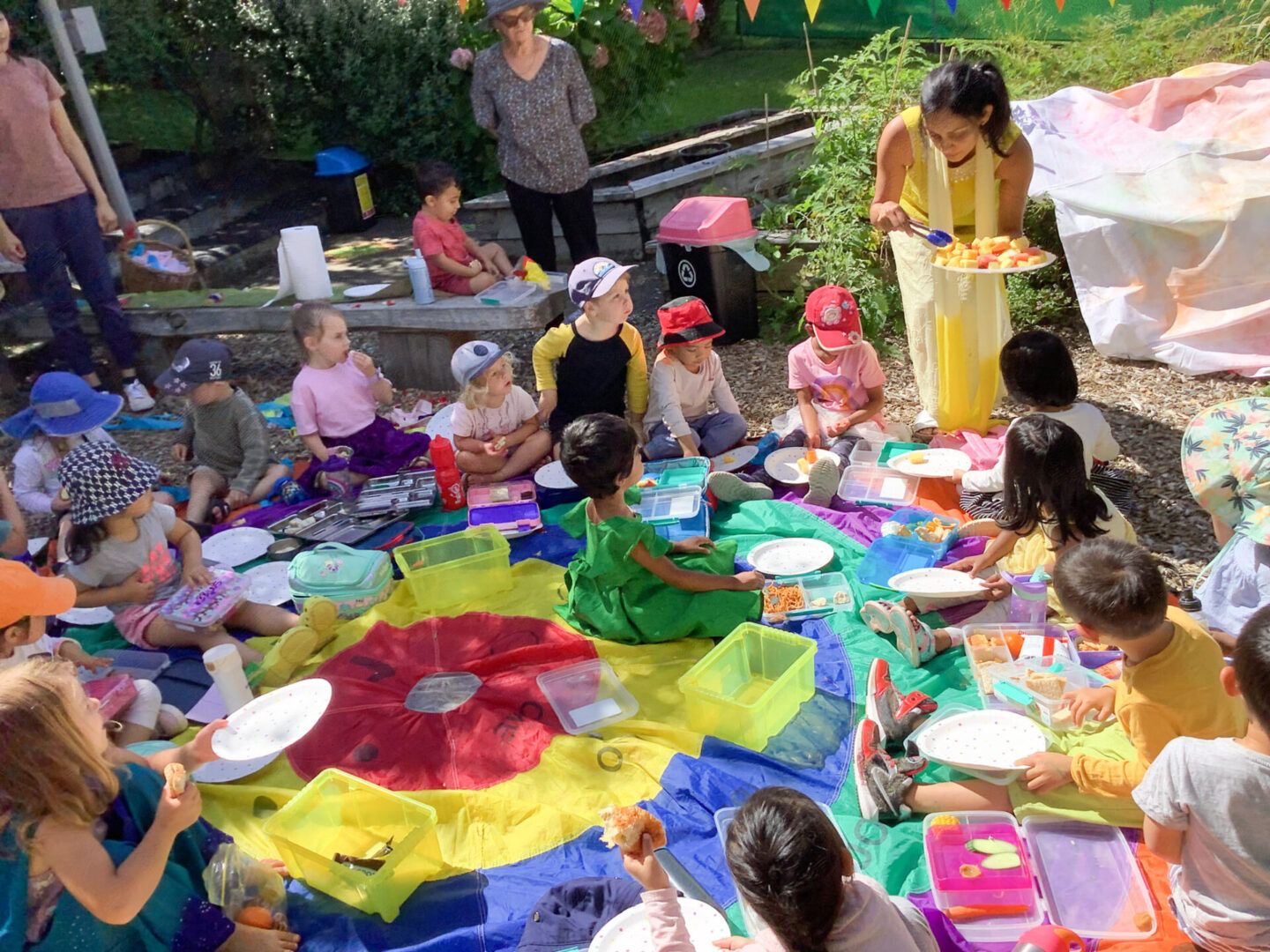What is the significance of Holi? The Holi festival has many meanings attached to it. It signifies the beginning of spring, the blossoming of love, a celebration of friends and family, the triumph of good over evil, and the chance to make amends and repair broken relationships.
At Remuera Kindergarten we had a special Holi party zone decorated in colour for our celebrations to occur. Highlighting clearly: ‘A festival of colour’.
Bright neon powder covers revelers amongst Indian communities during the annual Hindu celebration called Holi, usually held in March. Known as the festival of colors, Holi is celebrated on the last full moon in the lunar month of Phalguna
Gulal – colorful powder made from natural, plant-based ingredients that is thrown on people, or mixed with water.
At kindergarten we threw this powder on a big white tablecloth which we will use on our signing in table. As you can imagine the children thoroughly enjoyed the invitation to choose and throw the coloured powders. We had flowers and streamers for the children to shower like confetti on their friends to save you from extra washing of colourful clothes.
Sweets – many foods and sweets are eaten during Holi. After the tossing of gulal, many people visit friends and family to exchange sweets and share meals. We had a picnic of colourful exotic fruit followed by lunch and iceblocks.
Games — we enjoyed number and colour matching games on our colourful parachute.
Cards – the children made ‘Holi cards’ to wish their friends and families a happy holi. With the words ‘ Holi hai’ meaning ‘it is holi!’
We were joined by some wonderful parents who made this day memorable with their special contributions as we enriched ourselves with some more cultural knowledge and appreciation.
We have a diverse community, and we value contributions from our all cultures. What a wonderful sense of belonging as a global citizen as children make connections between people, places and the wider world.

